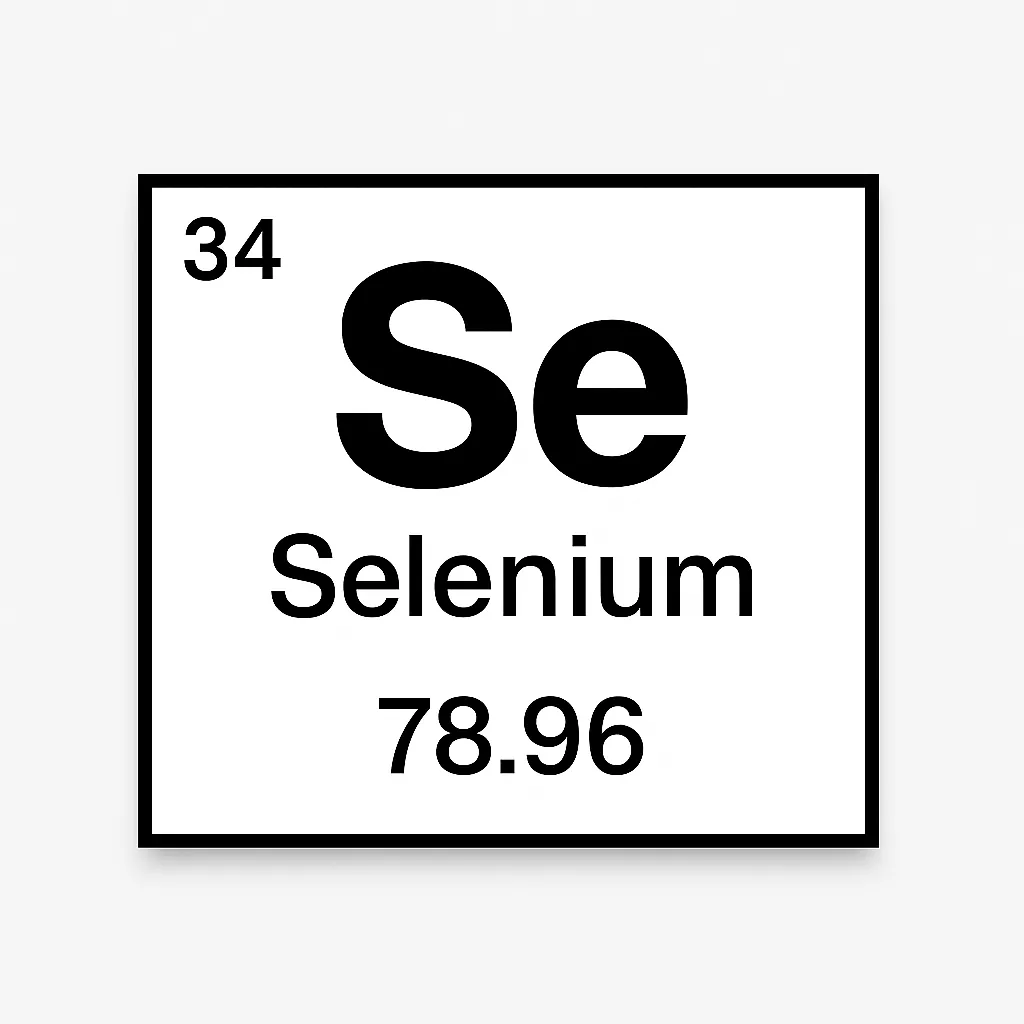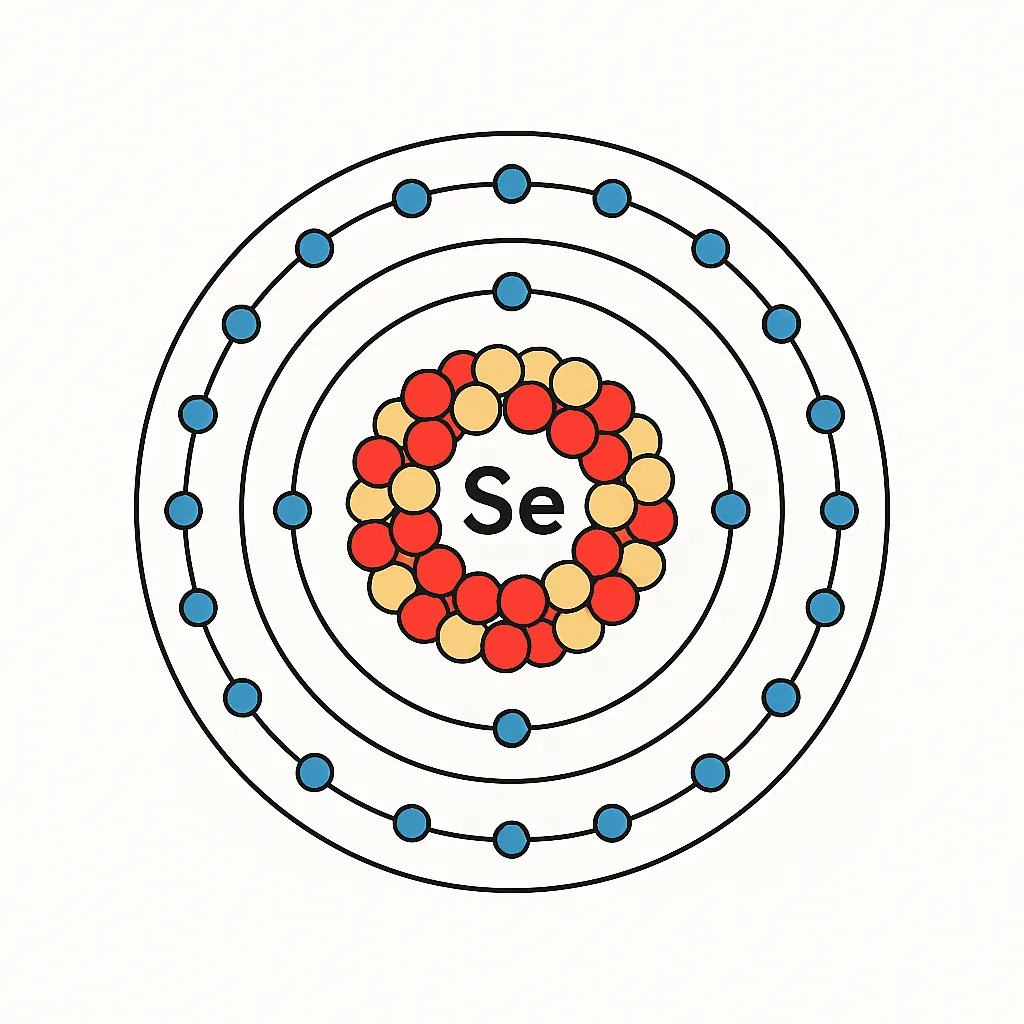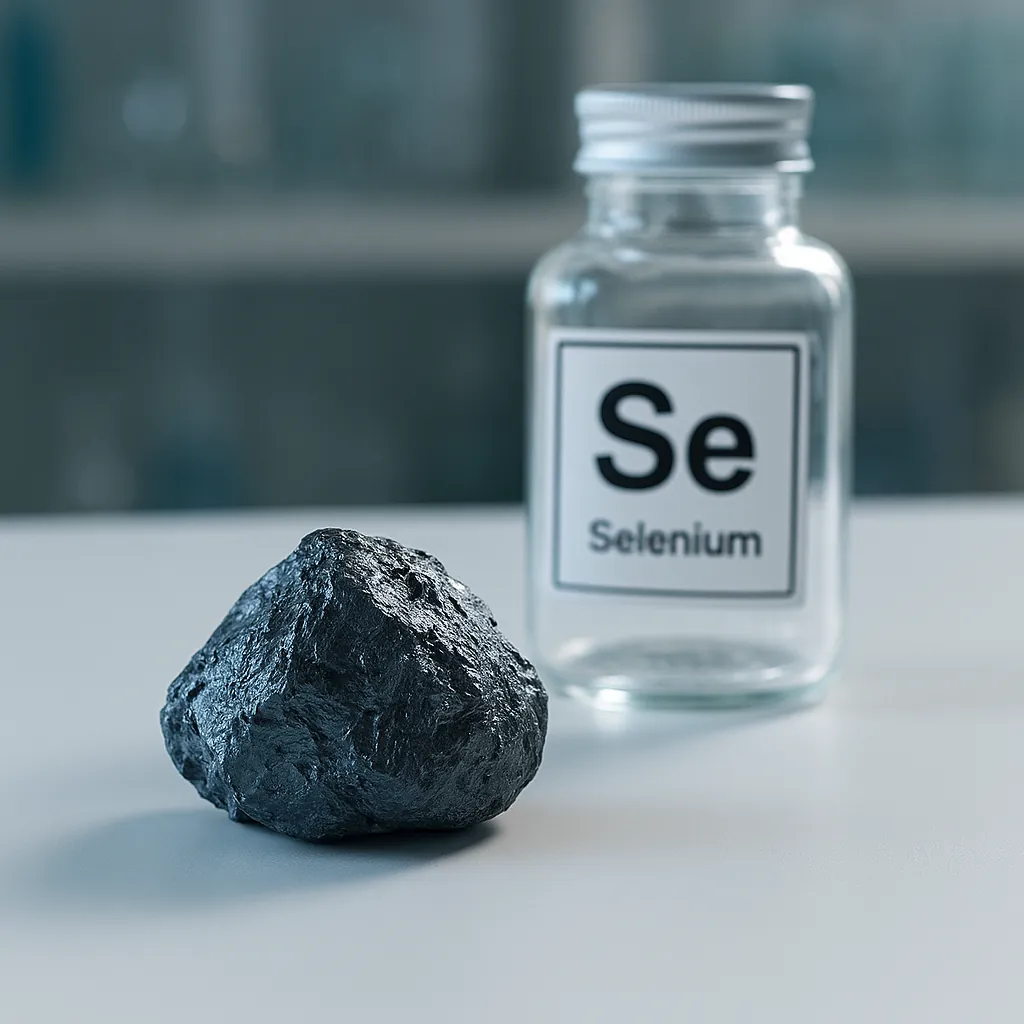Introduction
Selenium, a lesser-known yet vital element, occupies the 34th position on the periodic table. Swedish chemist Jöns Jacob Berzelius identified this element in 1817 while studying a reddish residue from a sulfuric acid plant. Belonging to group 16, it shares traits with sulfur and tellurium. Selenium plays a crucial role in industrial applications and biological processes. In 2025, scientists actively explore its potential in technology and health. However, excessive exposure can present risks. This article examines the element’s discovery, properties, uses, health effects, and significance in modern science.
The name of this element comes from the Greek word “selene,” meaning moon, reflecting its connection to tellurium, named after Earth. Berzelius initially confused it with tellurium due to their similarities. Over time, researchers revealed its distinct characteristics. Industries now depend on this element for various purposes, while nutritionists investigate its impact on human health. Its dual nature—beneficial in small amounts, toxic in excess—captivates researchers. This duality shapes its narrative. Let’s delve into its discovery and properties.
This element holds a special role in both natural and synthetic settings. Its presence in soil affects agricultural practices, and its compounds boost technological innovations. In 2025, ongoing research underscores its importance. This article traces the scientific journey of selenium, balancing its benefits with its challenges. From its initial identification to current applications, it offers a fascinating story. We begin with its discovery and chemical traits.

Discovery and Properties of Selenium
Jöns Jacob Berzelius discovered selenium in 1817 while investigating a Swedish factory producing sulfuric acid. He noticed a red sediment with properties unlike sulfur. Berzelius isolated the element and recognized it as a new substance, naming it after the moon due to its lunar link with tellurium. Selenium exists in several allotropes, including gray, red, and black forms, with the gray form being the most stable. This non-metal conducts electricity better than most non-metals, especially under light, a trait known as photoconductivity.
With atomic number 34, this element resides in group 16 of the periodic table, alongside oxygen, sulfur, and tellurium. It has an atomic weight of 78.97 u and typically forms compounds in the +4 or +6 oxidation states. Chemists value it for its reactivity with metals and non-metals, creating selenides and selenates. Its ability to convert light into electrical signals proves useful in technology. It also occurs naturally in trace amounts in soil, water, and some foods. This versatility arises from its unique electron configuration. Now, we explore its practical applications.
The discovery marked a milestone in chemistry. Berzelius’s work laid the foundation for understanding non-metals with semiconductor properties. Over decades, scientists refined their knowledge of its behavior. Its presence in the Earth’s crust, though small, supports various ecological cycles. Next, we examine how humans utilize this element.

Uses and Industrial Applications
Selenium finds wide use in industry and technology due to its unique properties. Manufacturers incorporate it into glassmaking to decolorize glass and produce red or pink tints. The electronics industry relies on this element for photodetectors, photocopiers, and solar cells, leveraging its photoconductive nature. In the 20th century, its rectifiers converted alternating current to direct current, though silicon has largely replaced them today. Additionally, it enhances the durability of steel alloys and rubber products.
Agriculture benefits from selenium as a soil supplement, boosting crop nutrition in deficient regions. Veterinarians use it to prevent deficiency diseases in livestock. In 2025, researchers explore its nanoparticles for cancer treatment and environmental cleanup. However, industries must handle it carefully, as improper disposal releases toxic fumes. Its industrial role highlights its importance, yet it demands responsible management. The element’s applications continue to evolve.
Historically, its industrial use grew with technological advancements. The development of photocells in the early 1900s showcased its potential. Today, scientists seek sustainable ways to harness this element. Its dual role in technology and agriculture underscores its versatility. Now, we turn to its health impacts.

Health Benefits and Risks
Selenium plays a critical role in human health as an essential trace element. The body needs it to produce compounds that act as antioxidants and support thyroid function. A diet rich in this element, found in nuts, fish, and eggs, reduces oxidative stress and may lower the risk of certain cancers. The recommended daily intake for adults ranges from 55 to 200 micrograms, depending on age and gender. In 2025, studies continue to investigate its potential in preventing heart disease.
However, excessive intake causes a condition marked by hair loss, nail brittleness, and neurological issues. People living near selenium-rich soils or working in industries handling it face higher risks. The line between benefit and toxicity remains narrow, requiring careful monitoring. Veterinarians also note poisoning in livestock grazing on contaminated pastures. This balance makes it a double-edged sword in nutrition.
Its health effects have intrigued scientists for decades. Early research linked deficiency to diseases like Keshan disease in China. Modern studies refine our understanding of its benefits and risks. Its presence in the food chain reflects its ecological significance. Next, we explore its role in the environment.

Role in the Environment and Future Research
This element occurs naturally in the Earth’s crust, with concentrations varying by region. Volcanic activity and weathering release selenium into soil and water, where plants absorb it. Farmers in deficient areas, such as parts of China and New Zealand, add it to fertilizers to enhance crop quality. However, mining and industrial activities can concentrate it, leading to water contamination and harm to aquatic life.
In 2025, researchers focus on selenium’s environmental impact and potential. Scientists study its role in bioremediation, using bacteria to remove it from polluted sites. They also investigate its use in sustainable energy, such as next-generation solar panels. Challenges persist, as overexposure threatens ecosystems. Future research aims to balance its benefits with environmental safety.
Its environmental presence influences global agriculture and industry. Early concerns about pollution have driven innovative solutions. Ongoing studies promise to expand our knowledge. This element’s journey reflects humanity’s quest for harmony with nature. Let’s conclude with its broader significance.

Leave a Reply